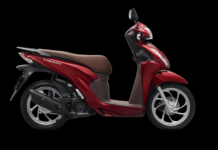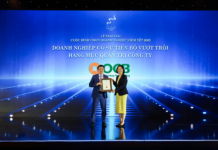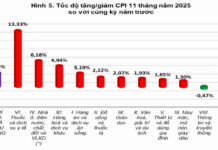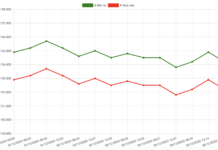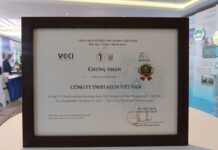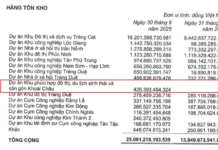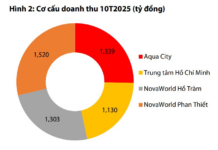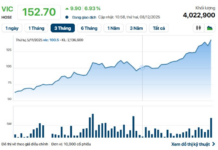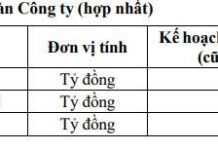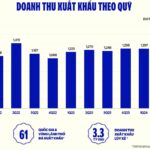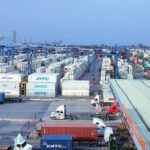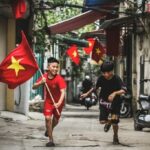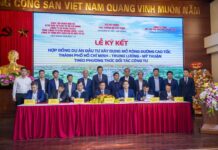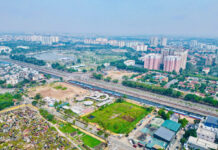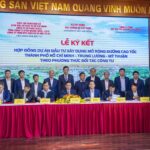Cai Mep – Thi Vai port (Phu My town, Ba Ria – Vung Tau province) is one of the most important ports in Vietnam. Strategically located about 80 km southeast of Ho Chi Minh City, the port serves as a major gateway for international trade to and from Vietnam.
The port facilitates not just international commerce but also significantly supports the southern economic region, home to numerous industrial parks and export processing zones.
In recent years, Cai Mep – Thi Vai port has witnessed remarkable growth in terms of capacity and infrastructure. The expansion of berths, investment in modern equipment, and upgrades to its logistics system have enhanced the port’s cargo handling capabilities.
However, to achieve its goal of becoming one of the leading port centers in the region and the world, Cai Mep – Thi Vai port must continue to seize new breakthrough opportunities.
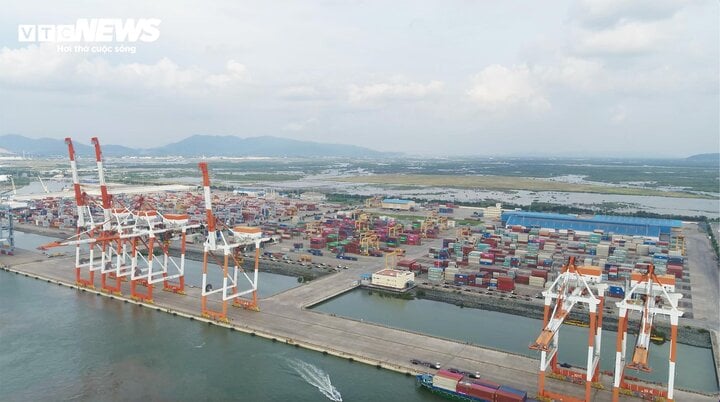
Cai Mep – Thi Vai port. (Photo: Hoang Tho)
Breakthrough Opportunities for Cai Mep – Thi Vai Port
The strategic location of Cai Mep – Thi Vai port, close to international sea routes, especially the trans-Pacific sea transport route, offers a significant advantage for its development. This proximity facilitates easy connections with major global ports such as Singapore, Hong Kong, and European countries.
Additionally, the port is an ideal destination for large shipping lines aiming to establish direct transport routes from Vietnam to major markets without the need for intermediary transshipment hubs.
The Ba Ria – Vung Tau region is experiencing a boom in the number of industrial parks, export processing zones, and economic zones. This surge creates a substantial demand for cargo transportation through the port. Enterprises in these industrial parks require not just an efficient logistics system but also demand continuous port operations to meet their growing import and export needs.
This development is not limited to port infrastructure expansion but also presents an opportunity for Cai Mep – Thi Vai port to become a regional logistics and cargo distribution hub. As large enterprises flock to invest in the area, the port will play a crucial role in the global supply chain, from transportation to distribution.
Moreover, Vietnam has signed numerous free trade agreements (FTAs) with countries and major economic blocs, including the Comprehensive and Progressive Agreement for Trans-Pacific Partnership (CPTPP), the EU-Vietnam Free Trade Agreement (EVFTA), and the Regional Comprehensive Economic Partnership (RCEP). These agreements open up vast opportunities for Vietnamese goods to enter new markets with preferential tariffs.
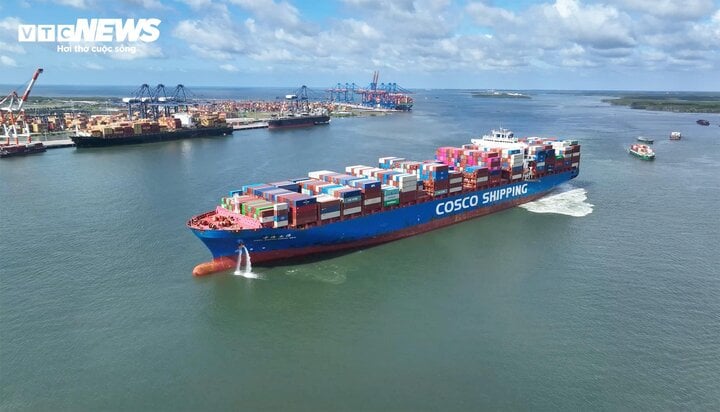
Ship berthing at Cai Mep – Thi Vai port. (Photo: Hoang Tho)
As a leading import-export gateway, Cai Mep – Thi Vai port stands to benefit directly from these FTAs. With Vietnamese goods gaining access to larger markets, the demand for transportation through the port will increase. This situation calls for the port to enhance its handling capacity, expand its infrastructure, and improve its logistics services to meet the needs of import-export enterprises.
One crucial factor in enabling Cai Mep – Thi Vai port to seize breakthrough opportunities is investment in infrastructure and technology. Upgrade and expansion projects are underway to enhance the port’s ability to receive larger vessels and increase cargo handling efficiency.
The application of information technology and automation in port management and operations will optimize workflows, reduce waiting times, and enhance service quality.
Additionally, investing in transport connections between the port and industrial parks is vital. Well-connected road, rail, and waterway systems will reduce transportation costs, facilitate businesses, and attract new customers.
Highlights on Capacity and Logistics Services
The Cai Mep – Thi Vai port cluster currently has 35 berths, with 22 berths in operation and a total capacity of 117.8 million tons per year. This includes seven container ports with a capacity of 6.8 million TEUs per year. The Cai Mep – Thi Vai port cluster accounts for over 16% of the total cargo handled through Vietnam’s seaports and 35% of the country’s container cargo, representing 50% of the southern region’s container cargo.
Cai Mep port, within the Cai Mep – Thi Vai port cluster, is ranked 11th among the 370 best container ports globally. The port system and supporting services for the port and industrial parks in the area continue to develop and expand.

Cai Mep – Thi Vai port integrates information technology and automation in management and operations. (Photo: Hoang Tho)
According to the latest statistics from the Vietnam Ports Association, from 2023 onwards, shipping lines have been deploying larger container vessels to the Cai Mep – Thi Vai port cluster. From the beginning of the year until now, an average of 150 vessels per month, with an average size of 120,000 tons (a 20% increase compared to the previous year), have called at the port, including 55 vessels over 150,000 tons.
This increase highlights the growing importance of the Cai Mep – Thi Vai port cluster in the national and regional logistics system. Moreover, the regular operation of large container vessels not only improves operational efficiency but also significantly contributes to the development of Vietnam’s maritime economy, particularly in Ba Ria – Vung Tau province.
Mr. Nguyen Hong Phuc, Director of Business at Tan Cang – Cai Mep International Terminal (TCIT), shared that the company is promoting solutions to maintain and improve service quality, such as periodically inspecting water depth at berths, turning basins, and maintaining and dredging to ensure safe access for vessels.
Additionally, they focus on maintenance and gradually invest in replacing old equipment, acquiring new machinery and facilities, enhancing capabilities, and increasing ship release productivity.
Cai Mep – Thi Vai port is on the threshold of a significant breakthrough opportunity in the near future. With its strategic location, the development of industrial parks, free trade agreements, and investments in infrastructure, the port is well-positioned to become one of the leading ports in the region and the world.
With its strong potential and robust investments, Cai Mep – Thi Vai port is experiencing rapid growth and making significant contributions to Vietnam’s socio-economic development. In the near future, Cai Mep – Thi Vai port promises to become one of the largest transshipment centers in Asia, putting Vietnam on the global logistics map.
Vinamilk’s Milk Exports Surge: What’s the Company’s Edge in the Global Market?
Vinamilk’s (HOSE: VNM) pure export revenue for Q2 2024 stood at VND 1,740 billion, a remarkable 37% increase compared to the same period last year, outpacing the 5.9% growth achieved in Q1 2024. The company’s continuous product innovation and strong relationships with partners in key markets are expected to remain the foundation for its export growth in the remaining six months of the year.
The Maritime Administration: 8,000 Stranded Containers Impede the Efficiency of Vietnam’s Seaports
The latest news from the Vietnam Maritime Administration (under the Ministry of Transport) reveals an excess of over 7,650 containers that have been lingering at Vietnamese port areas for more than 90 days. This backlog is predominantly centered around major ports in key cities: Ho Chi Minh City, Hai Phong, Danang, and Vung Tau.
“Vietnam: A Country Poised for Greatness, the Premier Destination in Asia-Pacific for Corporations”
Vietnam is now on the radar of global investors, thanks to its alluring prospects and advantages. This vibrant country offers a unique blend of cultural richness, dynamic economic growth, and a host of investment opportunities that are hard to ignore. With its favorable business climate, strategic location, and dedicated workforce, Vietnam has become an attractive destination for those seeking profitable ventures and sustainable growth in Asia and beyond.
The Great Foreign Car Wave: A Flood of Autos into Vietnam
“With a projected annual reduction of 6.4% in import tariffs for fully-built cars from Europe over the next decade, Vietnamese consumers will undoubtedly have increased access to premium vehicles. The tariffs are expected to reach 0% by 2030, opening up a world of opportunities for car enthusiasts in the country. However, concerns have been raised about the potential impact on the domestic automotive industry, with calls for authorities to conduct thorough evaluations and provide necessary support to local car manufacturers in anticipation of the influx of foreign automobiles into Vietnam.”

